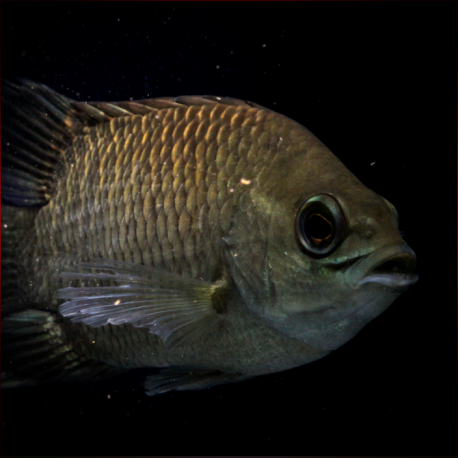More info
Datasheet
| Minimum Tank Size | 110 litres / 29.06 US gallons |
| Maximum Size | 15.0cm / 5.91inches |
| Temperature | 23°C / 73.40°F - 28°C / 82.40°F |
| Hardness | 5-12ºdH |
| pH | 6.5-7.5 |
General Description
The Malabar Leaffish, scientifically known as Pristolepis marginatus or common catopra, is a relatively rare fish species in the aquarium trade, increasingly available due to captive breeding efforts. This species can grow up to 15.0cm in size and is best suited for larger community tanks.
Aquarium Setup
To create an ideal environment for the Malabar Leaffish, a tank of at least 110 litres is recommended, with a sandy substrate, smooth rocks, and driftwood roots to mimic its natural habitat of flowing waters. A good flow rate should be maintained in the aquarium, and the fish can thrive in both planted and unplanted setups. For specific water conditions, a pH range of 6.5-7.5, a water hardness of 5-12°dH, and a temperature between 23-28°C are suitable (see table).
Behaviour
These fish have a carnivorous diet and may attempt to consume tankmates that are small enough to be viewed as prey. They can also display aggressive tendencies, making it advisable to keep them with similarly-sized or larger species that appreciate flowing water, such as silver or apollo sharks.
Feeding and Diet
In the wild, the Malabar Leaffish is primarily carnivorous, but it may also consume nuts and seeds. In captivity, they are versatile eaters, accepting a variety of dried, frozen, and live foods without fuss.
Reproduction & Dimorphism
Breeding the Malabar Leaffish in the aquarium has been achieved through methods similar to cichlids. Males construct nest-like pits from pebbles, where females deposit eggs. Notably, males guard the eggs and fry, displaying increased aggression during this period. Female fish develop a rounder appearance when in spawning condition.
Habitat and Distribution
Endemic to the Western Ghats of the Kerala region in India, the Malabar Leaffish prefers habitats in fast-moving streams, rivers, and even whitewater areas. This distinguishes it from other nandids that inhabit different aquatic environments.

